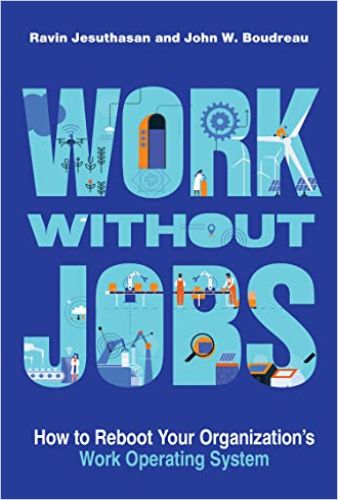Hybrid Teams: How to Avoid Two-Class Systems

“Don’t you sometimes feel lonely sitting in your home office?” my neighbor asks at the garden fence at the end of the day. He was wearing his business shirt with a tie, had a suitcase in one hand, and was pulling out his house key with the other when he saw me. “No,” I reply self-consciously, in slippers and shorts. “Actually, I don’t. I have much more peace and quiet to do my work here than in the office, and the coffee is better, too.” I don’t say that I no longer spend two hours a day in crowded suburban trains, which I always paid for myself, and I am much happier about that.
“I’m more productive in the office,” he says. “And I’ve also heard that working physically with your colleagues and supervisors helps your career. You just have a greater sense of connection in the office. Don’t you think?” I ponder. First, I want to ask, “Be honest: Who in your company do you want to be more ‘physically connected’ to than you already are?” Then I say, “I think it depends.” “In what way?” he asks. I answer, “Whether or not your boss can manage hybrid teams. I don’t think most bosses can yet. Mine can.”
My neighbor puts the suitcase down, puts the key back in, and says, “Oh?”
1. Two-Class Systems?
Since most companies have made hybrid working the new normal, there have been discussions about the pros and cons of such systems. The arguments have been exchanged, the preferences have been established, and the necessities have been defined. One exciting discovery was that the frequently observed development of a “two-class system” (those who work from home vs. those who work in the office) cannot be dismissed. However, depending on the perspective, it becomes clear that this does not necessarily mean a general disadvantage for one group. People who (still have to) hold meetings in their living room may not like remote work, nor is the office unrivaled regarding flexible collaboration and focused deep work. In many cases, the advantages of both worlds are also the disadvantages of each – depending on the personal situation, professional goals, the job performed and the employer’s and co-workers’ requirements.
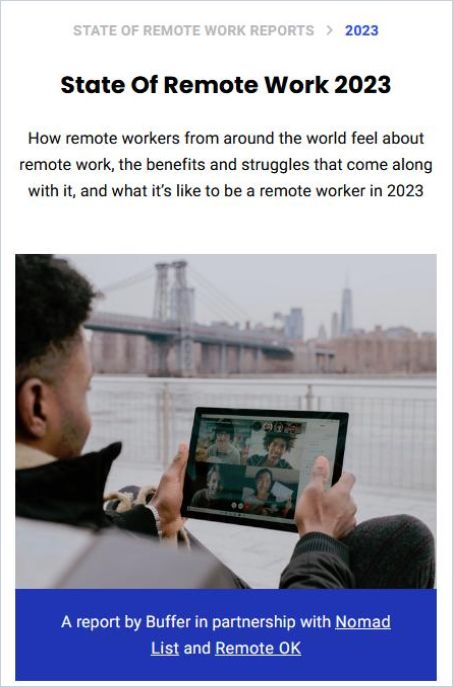
For all those involved, regardless of where they work and when, hybrid working is a challenge, and crude classifications into two groups or classes should therefore be avoided as a matter of principle. To rule this out, many companies are currently ordering their people back into the office. They assume this will solve the problems in their people’s heads and agendas. Yet, the one-class system always had many disadvantages, which remained unspoken as long as it was unrivaled.
The more gig work, flexible collaboration contracts and globalization progressed, the more “habitual” it became in companies that weighted the advantages more heavily than the disadvantages.
Now, large parts of the workforce are becoming accustomed to advantages and disadvantages that other colleagues have known for years or decades. LinkedIn research indicated that almost 50% of professionals already worked from home at least one day a week before the pandemic, and 57% would prefer to work from home for three days or more each week.
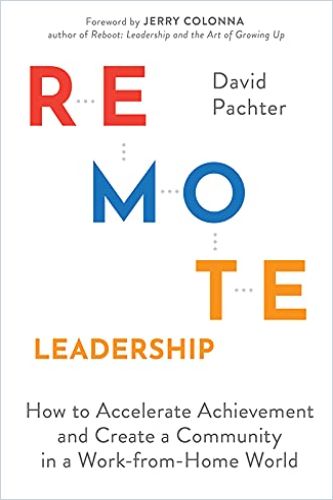
Some 91% of the respondents of the recent State of Remote Work 2023 Report say they have positive experiences of working away from the office, and 98% claimed they would like to work remotely, at least partially, for the remainder of their careers. Furthermore, 98% would recommend the benefits of remote work to a friend (just like I did with my neighbor).
The fact that disadvantages in companies are often discussed more than advantages (both among those who work primarily in the office and those who mostly perform at home) these days is human – but not in line with the actual findings of the current hybrid workplace surveys.
Yet it’s a sign that the discussion about efficient and healthy collaboration is alive and old taboos are being broken. Where one-size-fits-all systems were imposed on everyone, organizations simply outsourced the problems that came with them and didn’t address them. But the same is true of a two-sizes-fits-all model: it can’t be perfect for everyone. What is possible, however, is to address the pros and cons and to find solutions at the individual level that open up opportunities and address disadvantages.
2. Leadership Awareness Is the Key
Even before the pandemic, about 25% of employed Americans worked from home at least part of the time. Despite that, remote work had a negative connotation. Even though my neighbor didn’t say it to my face, he’s not the only one who remains skeptical about the concept.
Now, results prove that remote work boosts productivity, and the nature of work has changed. MIT Sloan’s Ideas Made to Matter reports that the “Bureau of Labor Statistics found that around 27% of the U.S. workforce was working remotely at least part-time as of August and September 2022,” which is not a huge increase. Yet, new academic surveys suggest that the number is closer to 50% due to the fact that government statistics often undercount how many people are working remotely.
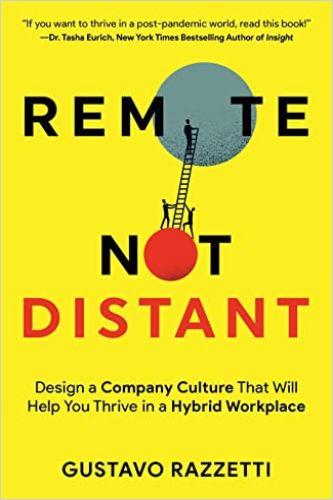
When 50% of the workforce works from home at least part-time, managers must first become aware of a considerable shift and then apply suitable management methods to orchestrate fair and productive collaboration, writes consultant Gustavo Razzetti in Remote Not Distant. He spells out what executives must do to gain the maximum advantage from a hybrid workforce:
- Leaders must accept that the hybrid workspace has become a permanent feature.
- To use remote work optimally, reflect on your corporate culture.
- Many companies must overhaul their in-office culture because it will not work in a hybrid workspace.
- Design, not luck, produces effective collaboration.
- Distributed teams can choose among six different modes of collaboration.
After making these considerations for your organization, take the next step.
3. Consider the Advantages and Disadvantages On Both Sides
For leaders, it’s particularly crucial to determine where employees’ capabilities and preferences lie and how they deal with different work environments and setups. Previous attempts to balance and align the advantages and disadvantages of in-office work and remote work in the form of a new “One Size Fits All (a Bit)” solution (three days in the office, two at home for everyone) usually fail because they tend to feel like the combinations of the worst of two worlds or do not deliver on their goals because they generate new frictions. Well-known, for example, is the “silent disco” phenomenon:
Even if all colleagues are in the office together on a fixed day, because the idea was to provide for physical exchange, many of them then have their headphones on all the time because they need to communicate with people on the other side of the world (or: street).
This doesn’t create more cohesion but more frustration: those who have to communicate via digital tools often still don’t have a quiet place in the office to do so. Those who want more exchange don’t get the opportunity. What looked great on paper turned into a team fiasco.
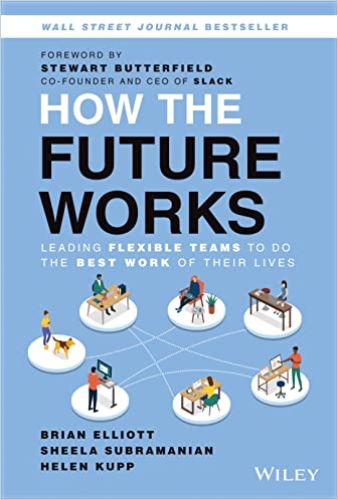
Therefore, individual solutions are better suited to increase employee satisfaction and effective collaboration. To achieve this, the famous pros and cons of both working methods must be weighed up together with the employee. Here they are.
a) Remote Work
“More Flexibility”
According to a McKinsey survey from 2022, 87 percent of the people who can work flexibly take it. This dynamic is “widespread across demographics, occupations, and geographies.”
Pro: Employees can better balance their workday with their personal lives. They save time (from March 2020 to September 2020 alone, commuting time in the US was reduced by 62.4 million hours per day due to COVID, with aggregate time savings of over 9 billion hours for employees) and nerves – while, at least, maintaining the same high level of productivity. In most cases, this pays off massively in terms of employee satisfaction.
Con: Many employees don’t have a handle on their time management or don’t have the proper infrastructure at home to appreciate this flexibility. This leads to various types of stress, and provides feelings of deprivation and – ultimately – health problems.
Synchronization Options: Time management can be learned (here, here and here are the most essential tips for employees), and infrastructure can – and should – be provided or supported by the employer. By the end of 2022, 20-25% of companies were paying some of the cost for home office equipment and furnishings. Returning to the office is often not a bad idea where neither succeeds.
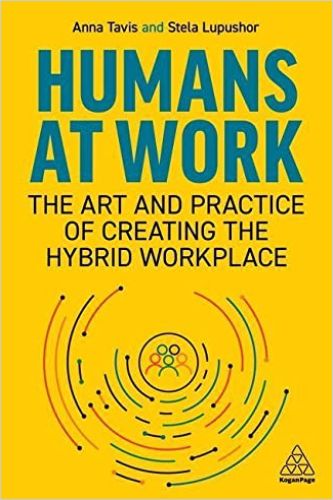
Be Aware of Time Zone Bias: Time zone bias has become a hot issue for some employees. Remote workers report that managers expect them to be responsive around the clock and then overlook them for promotions. Time zone bias is mostly unintentional from the managerial side, but it can lead to lawsuits against companies and the resignation of high-value talent.
“Lower Costs”
Those who no longer have to commute save massive costs. According to Global Workplace Analytics (GWA), nearly 60 percent of employers identify cost savings as a significant telecommuting benefit. At the same time, according to business.com, “Sun Microsystems identified telecommuting-prompted savings of $68 million yearly in real estate costs while Dow Chemical and Nortel saved over 30 percent on non-real estate costs.”
Pro: GWA estimates that “employees who work from home full-time save between $2,000 and $7,000 in transportation and work-related costs.” Organizations can also save a lot of money (and at the same time “invest” into employee satisfaction): For all remote-work-compatible jobs, if everyone who wanted to work remotely did so just half of the time, the total money saved would be over $700 billion annually. This averages out to more than $11,000 per employee per year.
Con: The company incurs new, sometimes “hidden” costs due to new communication systems and process friction, investments in better security and the necessary control of employees.
On the employee side, (mental) health problems (loneliness, incorrect sitting posture, etc.) can arise if they are not educated enough about ergonomics and cohesion or if they are burdened with too many tasks due to a lack of overview.
> Synchronization Options: Existing costs on both sides can be reduced or eliminated (after an initial effort to create suitable systems) through a hybrid collaboration culture. Education is everything when it comes to health issues; clear rules on communication and reporting problems have a preventive effect.

Hating Hybrid Work? Here’s how to make it less painful.
The Washington PostBe Aware of Financial Well-being: 60% of full-time employees are stressed about finances, and remote workers tend not to raise red flags because they think it will attract negative attention or are afraid of being labeled “luxury employees” by the office staff.
“Better Focus”
One of the most cited reasons for working at home is better focus and higher productivity. For once, employees and employers are essentially in agreement here.
Pro: If you have the right work environment at home, you can demonstrably do more deep work since most offices are giant distraction machines. According to a joint study from the University of Chicago and the Mexico Autonomous Institute of Technology, 40 percent of respondents found their work-from-home productivity better than their in-person productivity. Sixty percent said they were more productive at home than expected. According to a Mercer survey with 800 employers, that’s true: 94% of them stated that work productivity was the same or higher since employees started working from home.
Con: For this to work, clear rules are needed. In the office, the rule was: When the door is closed, someone needs quiet. Those who set rules for “virtual doors” and ensure that the new virtual accessibility does not lead to supposed permanent availability are doing themselves and their people a favor.
> Synchronization options: Create places in the office in a newly “abandoned” space where Deep Work can be done. Refrain from large-space options. The proclaimed remote Deep Work results should also be checked: Lawn mowing is not Deep Work.
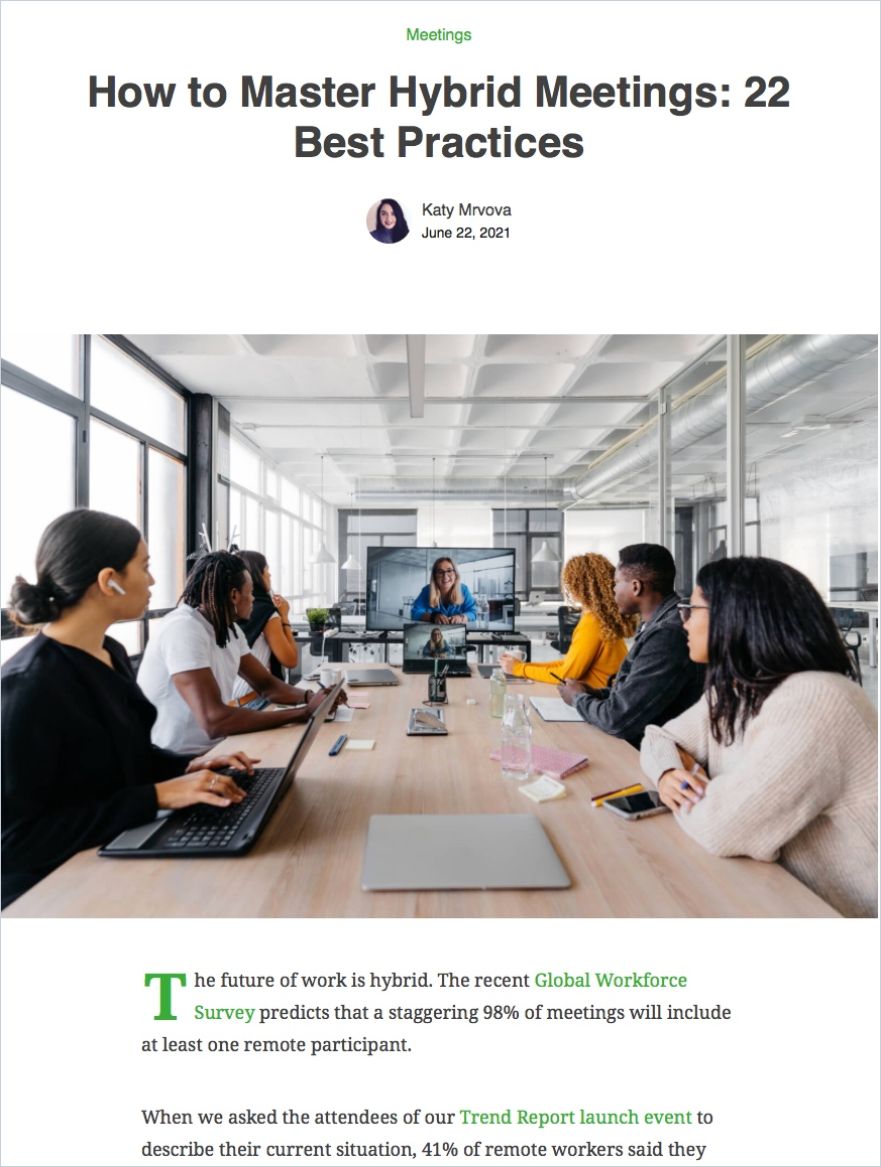
Be Aware You’re Role Models: To ensure that your people can actually do focused work in the home office – remember, you’re a role model. Bosses who work more from home and set clear rules for collaboration time have happier employees and gain insights into a hybrid collaboration that other bosses never will.
b) In-Office Work
“Better Career Options”
Research from Harvard suggests that working from home reduces a worker’s chances of promotion by 12%, and data from the UK Office of National Statistics indicates that remote working reduces chances of a bonus by 38%.
Pro: So far, networking and culture-building opportunities in offices have no remote substitute: The office is where workers (especially young ones) find mentors and friends. They have better access to team and business intel through bonding with present peers, leading to alliances and a range of new career opportunities. This is a vital reason many workers consider returning to the office. Some experts even argue that in-office staff should be given an advantage regarding promotions because they are “physically involved.”
Con: A Deloitte survey highlights that only 36% of workers feel satisfied with the growth opportunities in their organization. Yet, providing perks or career advancement opportunities to a specific group of employees only because they show up in an office creates inherent unfairness, prevents a culture of trust and will discourage remote workers.
> Synchronization options: Avoid cementing a “two-tier system” through incentives such as bonuses or career paths that are open to only one of the two groups. Instead, replace preferences and disadvantages with the performance principle that applies to all (which must be individually adapted when it comes to goals and measurement): Advancement is achieved through performance. Where that performance is achieved is secondary. Setting individual and performance-enhancing incentives (with one eye on equity) and opening up new career paths wherever it makes sense fosters hybrid engagement and synchronizes the workforce.
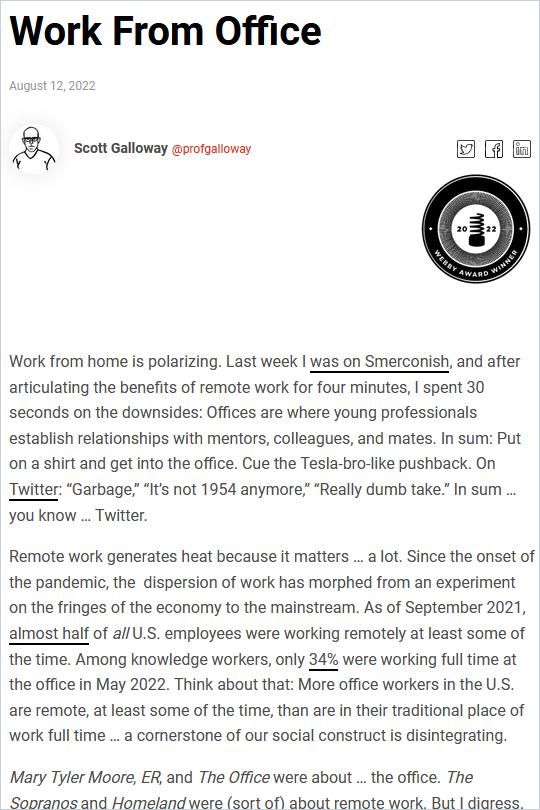
Be Aware of In-Office-Bias: According to elearningindustry.com, “physical distance impacts team cohesion and innovation which, in the long run, could cripple the home workers’ careers.” One can mitigate this issue by supporting the career advancement journey of all workers equally, minimizing unconscious bias, carrying out regular evaluations, creating a shared learning and resources center and nurturing positive working relationships.
“Easier Team-Building“
According to a recent Gartner survey, 76 percent of HR leaders are more concerned about team connections than before the pandemic, for a good reason.
Pro: For teams that traditionally interact with colleagues worldwide, a general move toward more hybrid work has been a relief because it has made the two worlds – one team at headquarters physically seeing each other every day, one remotely – more “natural” and structured. Nevertheless, chance encounters at the coffee machine or the copier, or the shared after-work drink, continue to ensure that the in-office staff can exchange more, laugh more together and also support one another when it’s not about scheduled meetings. You should not take these opportunities away from them (without asking).
Con: People who work remotely and are looking for this kind of exchange but can’t get it feel isolated. They miss their colleagues, although, in the end, there may be more to be said for the home office than against it, and they often look for ways to exchange ideas away from well-structured work meetings. It becomes especially difficult when they feel like “second-class employees” because they notice information flow disadvantages, are afraid of being replaced by freelancers rather than the in-office staff, or, once again, the company forgets to invite them to an event.
> Synchronization options: In How to Win Friends and Manage Remotely, marketing strategy consultant McKenna Sweazey recognizes that supervising and relating to employees in distant locations is one of the most prominent challenges managers face today. Leaders and co-workers alike have various tools for effective virtual collaboration, but as Sweazey reports, maintaining relationships as a remote manager demands empathy. She provides insight and advice on many issues that challenge long-distance managers, including how to make teammates feel enthusiastic about working together even if they never see one another face-to-face.

Here’s her elevator pitch for remote team-builders:
- Make yourself accessible to your colleagues.
- Virtual teambuilding exercises build connections between the team and individuals.
- Share corporate know-how with employees in remote locations.
Be Aware of Communication Pitfalls: In hybrid setups, minor details in communication often unintentionally undermine team building because they are interpreted incorrectly – and for a particular group: as disadvantageous. It is therefore advisable to ask oneself not only about important topics that are communicated: How might hybrid group A, B or C receive this? The topic of diversity, equity and inclusion plays a significant role here. When it comes to engaging physically diverse groups in the company, it also makes sense to let all team members have a say in how they want to work together.
4. Leaders Increasingly Become Synchronizers
“My boss sees himself as more of a synchronizer than a micromanager,” I say. “In the past, neither he nor I could do much with ‘coaching style leadership,’ but since the pandemic, he moved away from input management – tracking who works how much, crafting ever-new ultra-precise job descriptions and task lists, and so on – to output management, that is, from the ‘how’ of the work to the ‘what’ and ‘why. That gives our team more flexibility without making work-life arbitrary. He learned, as someone who now also works from home a lot, that the different setups and roles his employees are in need synchronization rather than homogenization to be efficient.”
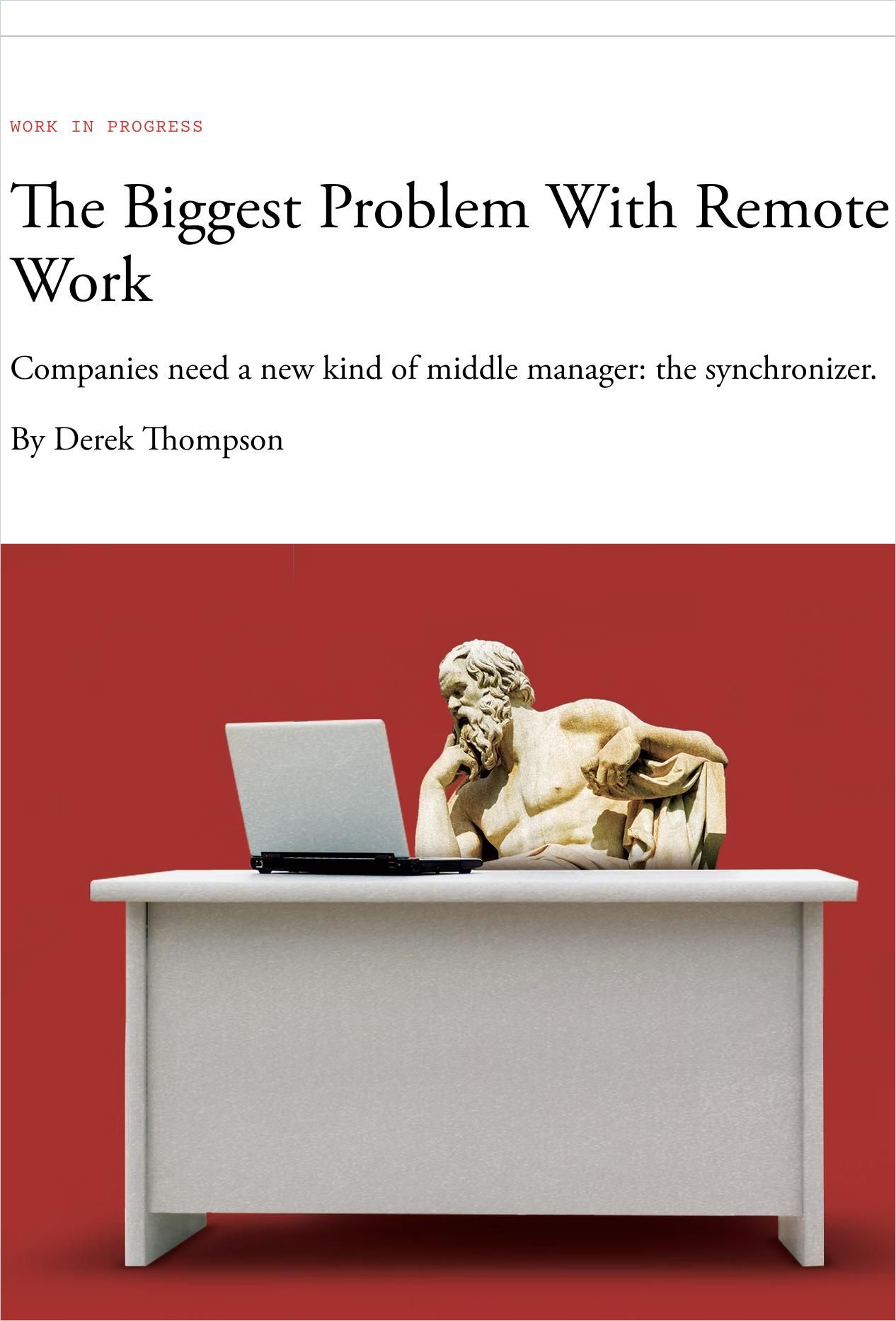
My neighbor says that his boss never really got away from micromanagement, for example. “To be honest: I also like things to be more straightforward and uncomplicated,” he says. “I value consistency and the space in which it’s generated more than the flexibility. It helps me structure my work and life, and I am thankful for it.”
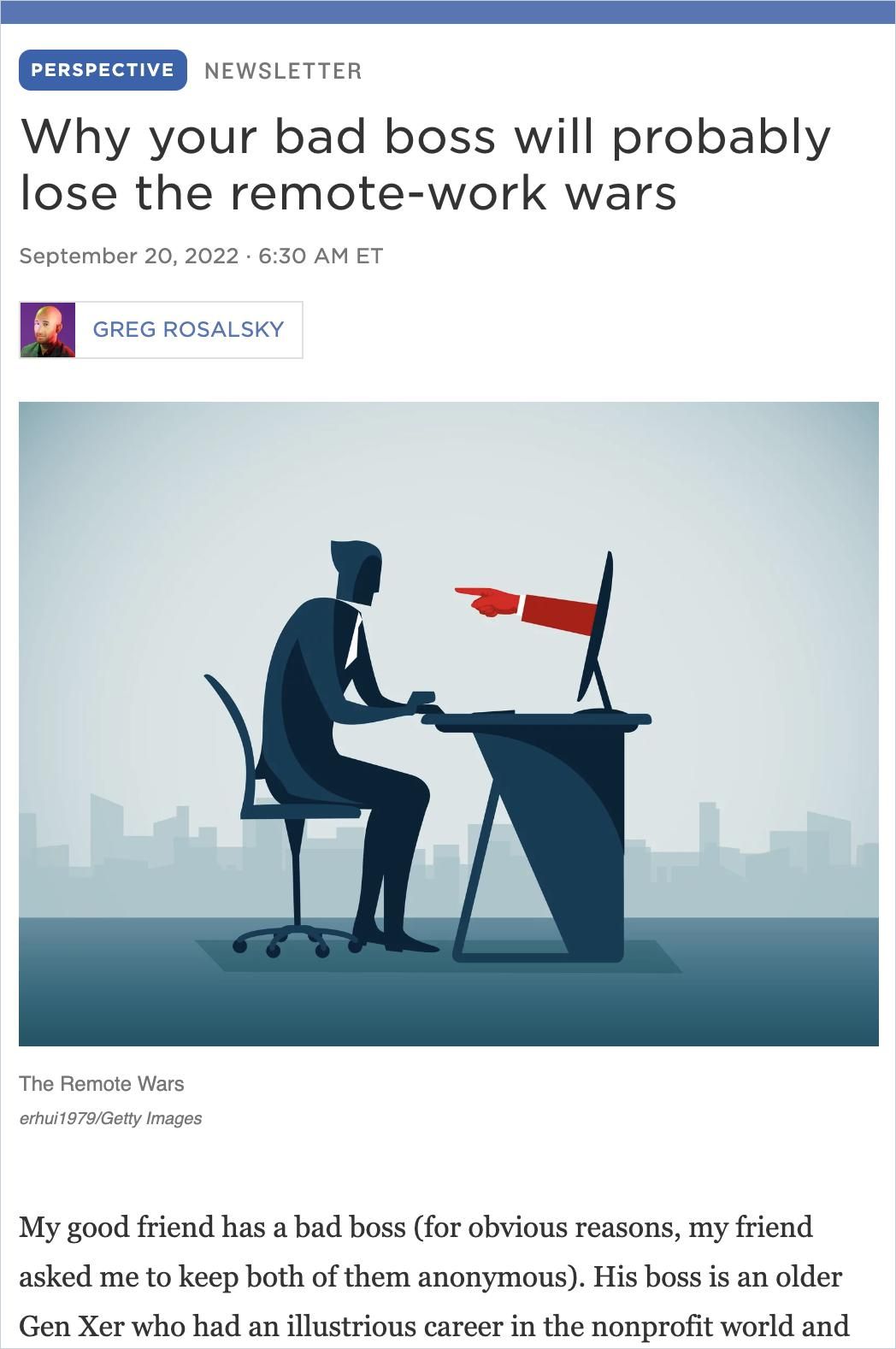
Yet, before he grabs his suitcase and enters his door, he adds that he is also considering whether he might prefer to work from a home office for some tasks in the future and that he’d be open to having a shared coffee at the garden fence every now and then to discuss best practices. “So that one day I’ll be a boss who also knows the subject from the other side. What would be a good number to start: one or two days a week?” We laugh. “Supposedly, two days in the home office is just the right number.”

